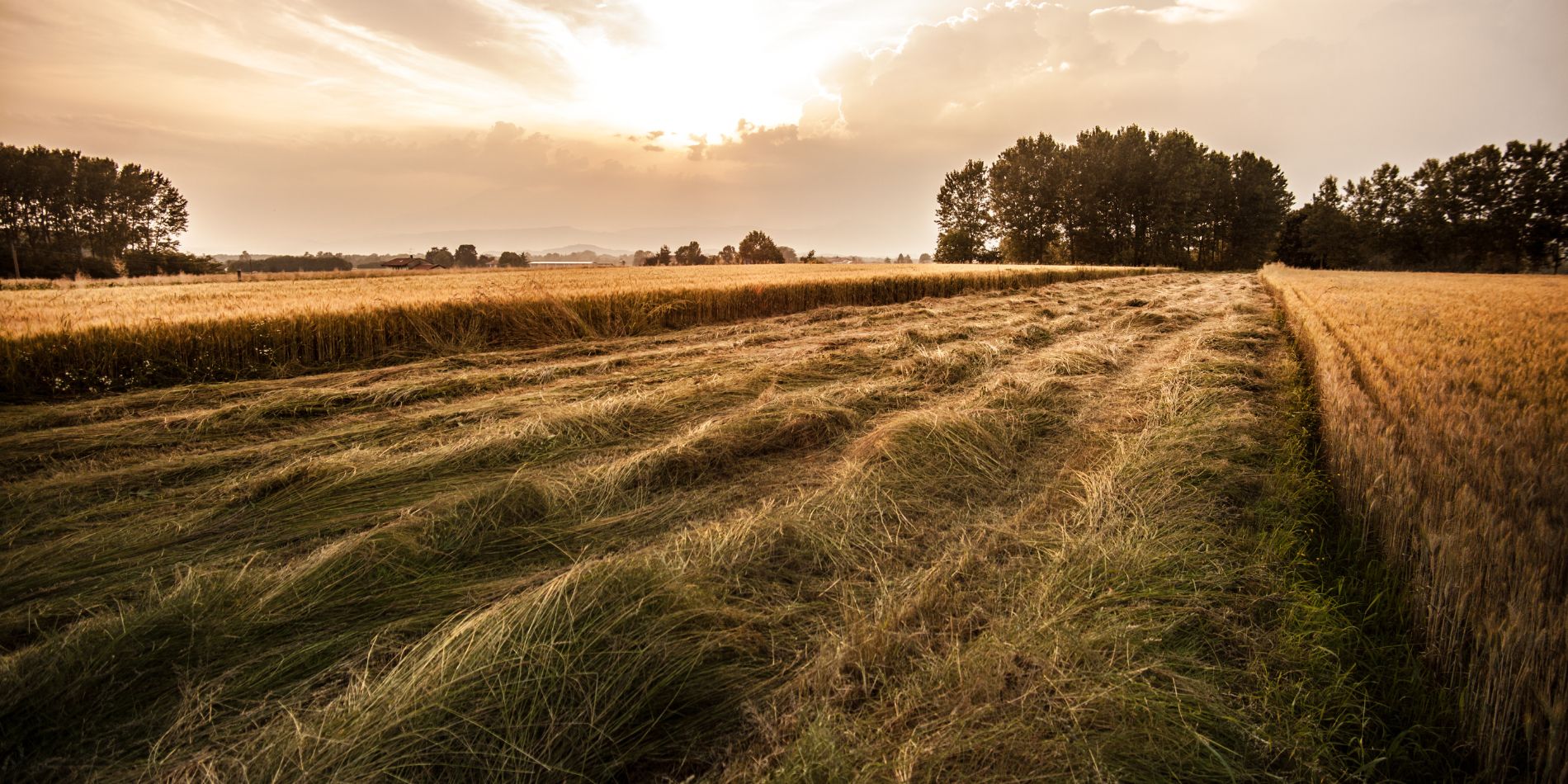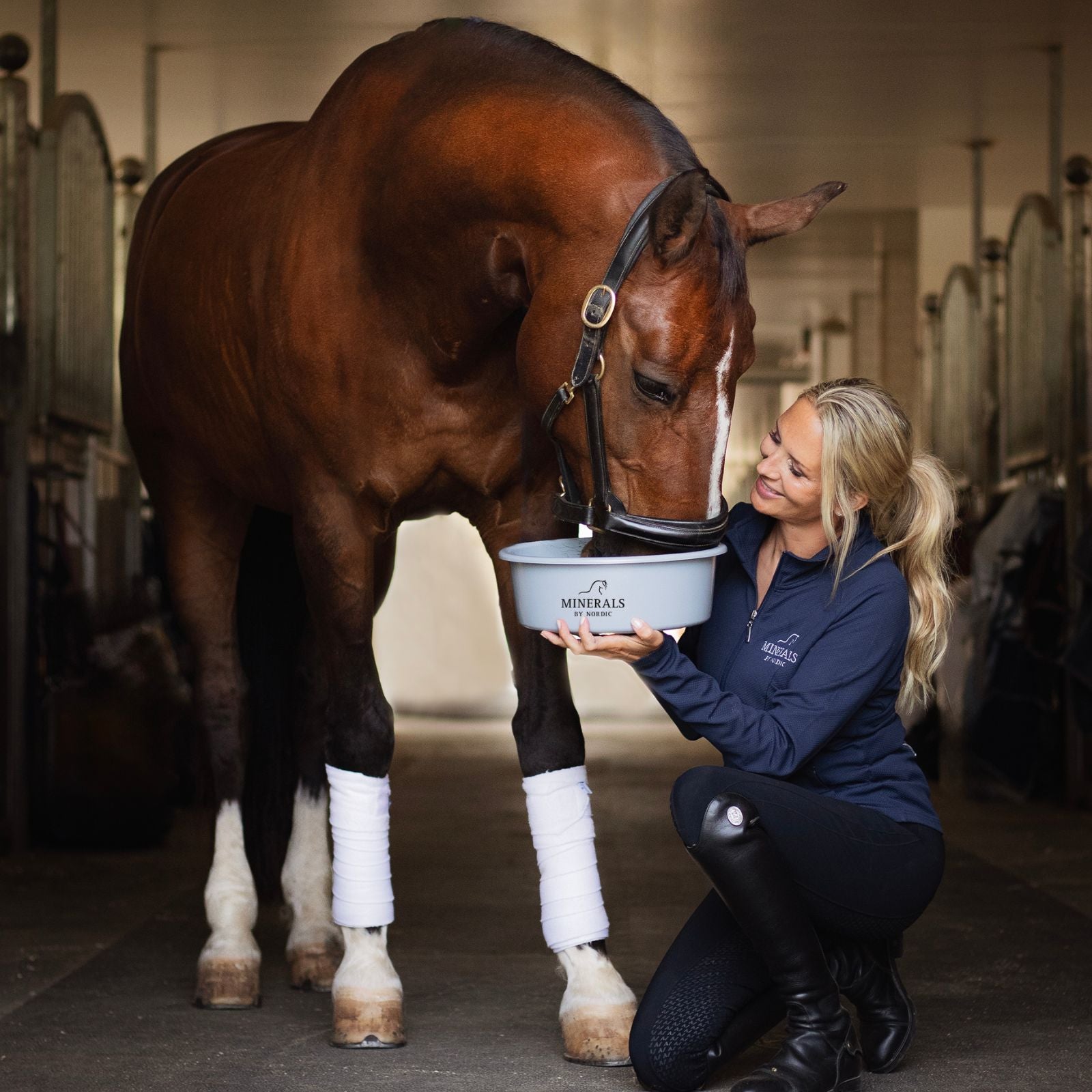Article: Checklist - Forage hygiene priority one

Checklist - Forage hygiene priority one
Roughage forms the basis of the horse's diet and is one of the most important factors for the horse's well-being.
Therefore, it is very important to check the quality of the roughage every day using your eyes and nose to determine its quality. If you use plastic-wrapped roughage, you should always remove the plastic to be able to inspect the feed before the horse gets it. If you feed roughage with plastic on it in the pasture, for example, it is easy for the horses to eat a large portion before you notice that it is, for example, moldy.
If you look closely at the roughage every day, you will quickly learn to detect any unusual odors, different colors, or other abnormal appearance of the feed, and can avoid it causing health problems in the horse.
Checklist for reviewing the quality of roughage
Smell & appearance
✓ Fresh and naturally scented – no signs of mold or musty odors
✓ Free from dust and fungal attack
✓ Even color – greenish hue indicates good nutritional value
Structure & content
✓ Coarse enough structure – not too short or broken straws
✓ Visible leaves and straws, not too coarse stems
✓ Free from contaminants such as soil, plastic, dead animals or garbage
Nutritional value & analysis
✓ Analysis of nutritional content performed – energy, protein and fiber
✓ Control of sugar and starch content for horses with sensitive stomachs or diseases
✓ Good balance between calcium and phosphorus
Handling & storage
✓Store in a dry and ventilated place to avoid mold formation
✓ Protected from direct sunlight and moisture
✓ No signs of pests
Tip! If your roughage is lacking in nutrition, you can supplement it with hay pellets .
Silage should smell fresh and good.
It smells more or less sour depending on the TS content. Low TS content means that the silage smells more sour because more lactic acid has been formed. Hay silage is not ensiled to the same extent and therefore does not smell as sour. Silage should have a green to greenish-brown color. If silage or hay silage smells like rancid butter or ammonia, is slimy or “burnt” and dark, it should not be fed. Hay should also smell fresh and preferably a little “spicy”, it should not smell musty, earthy or moldy, and it should have a good structure and not be matted or stuck together.
Mold fungi in the feed can also form mycotoxins ( mold toxins ) that negatively affect horses in various ways. Some molds infect growing crops, so-called field fungi, and can be found in, for example, grain already at the time of threshing. This includes species of Fusarium . These can form a number of mycotoxins, including the group of trichothecenes.
If the crop is stored after harvest with too high a moisture content, storage fungi can grow. These include species of Penicillium and Aspergillus, where A. fumigatus in particular has been linked to respiratory diseases, among other things. These mold species can grow in both straw and grain.





